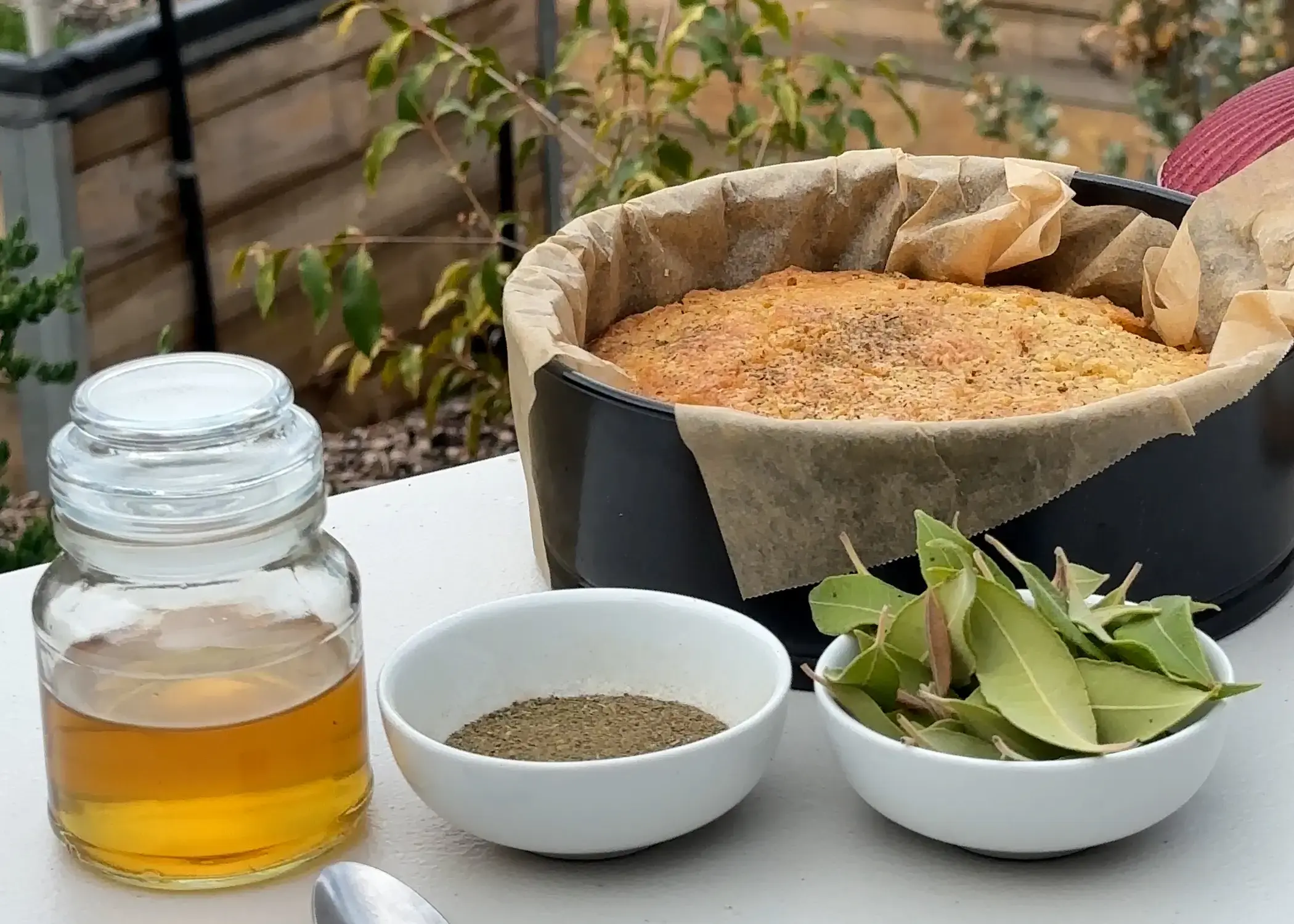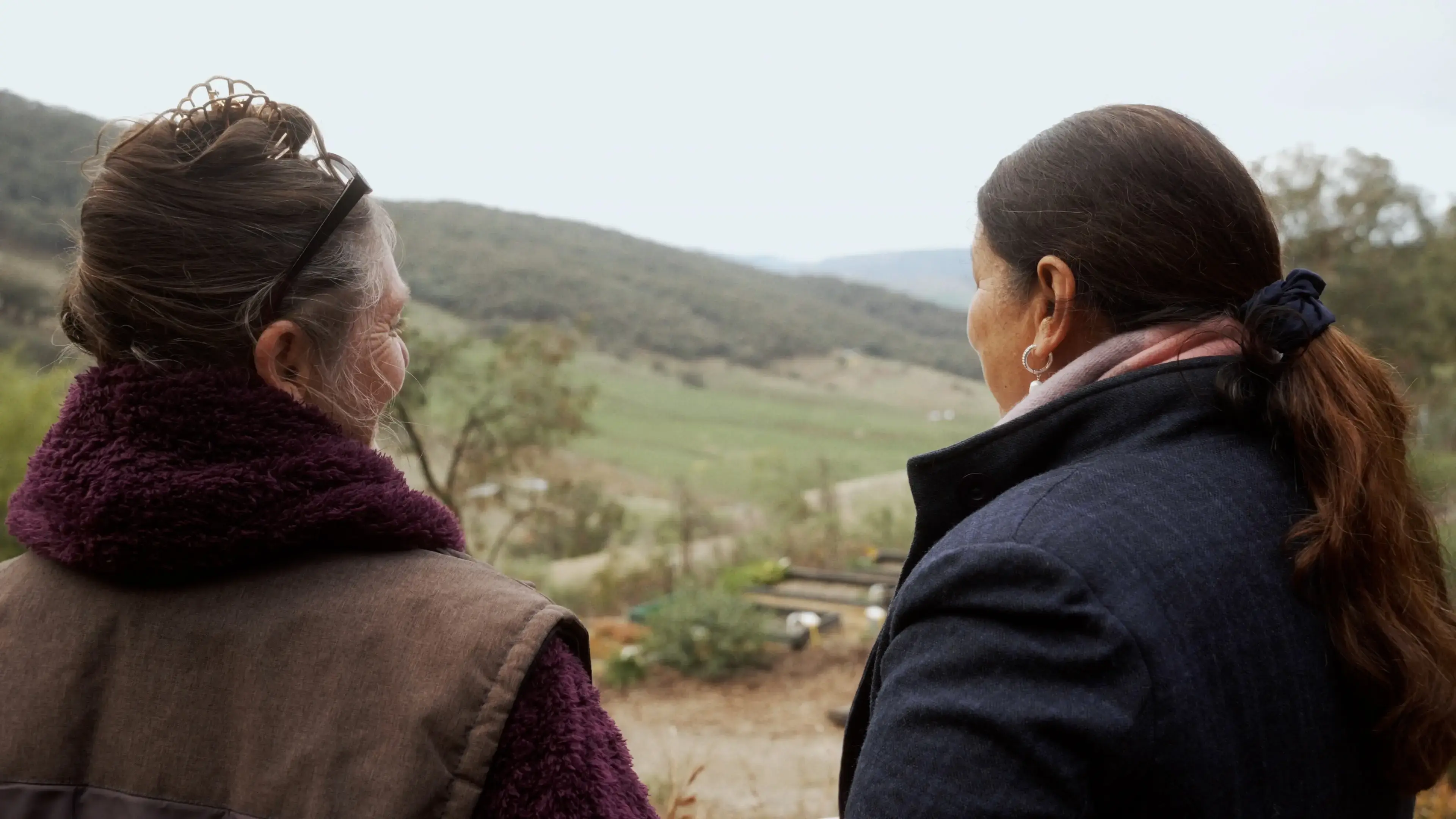
Sciences & Technology
Save our soils: Why dirt matters

The Native Harvest Kitchen cookbook demystifies native ingredients and helps you incorporate Indigenous food into everyday meals.
Published 18 October 2024
On Waveroo Country – about 30 kilometres south of Wodonga in north-east Victoria – Indigenous farmer Gay Therese Baker enjoys a piece of freshly baked lemon myrtle cake.
Drizzled with fragrant lemon myrtle syrup the cake’s lemony zing is sweet and refreshing.
It's best enjoyed alongside a steaming cup of native river mint tea.
We’re on Gap Flat Track Native Farm in the Australian high country, where Gay, who has a strong Indigenous and farming lineage, currently grows murnong and is trialling nearly 20 other native crops and hopes in time to expand to grow other edible native crops.
She hopes in time to expand to grow other native plant foods.
Her farm is situated on a steep slope halfway up a mountain, the perfect place to grow the alpine and subalpine climate-loving Microseris lanceolata, one of three species of murnong Gay is growing.
Murnong was once widely distributed across temperate southern Australia before the arrival of colonising pastoralists and literally millions of sheep, who damaged murnong habitat and disrupted its role as an important food for First Nations peoples.
Above ground, the murnong looks similar to a dandelion, with yellow daisy-like flowers in summer and a fluffy head of seeds in spring.

Sciences & Technology
Save our soils: Why dirt matters
Below ground is the nourishing starchy tuber with a flavour similar to potato or parsnip. Gay loves to cook it simply in butter, with salt and mountain pepper berries, finished with olive oil and sea celery leaves for garnish.
Details of this preparation, alongside recipes for the lemon myrtle cake and river mint tea are shared in our new, free to download cookbook, Native Harvest Kitchen.
In all, the book contains 21 new recipes developed by contributors who are agricultural researchers, professional chefs and farmers of native ingredients like Gay Baker.
1 / 5
Through the book we hope to show how indigenous ingredients such as murnong can be easily incorporated into our home herb and veggie patches and everyday cooking practices*, widening the range of plants we eat (good for our health), and encouraging us to explore variety in agriculture (good for the planet).
Warrigal greens curry is one of the dishes my family enjoys and also makes a lovely light gnocchi. Lilly Pilly and Pigface are perfect for pickles, while ruby saltbush berries decorating pavlova are festive and joyful.
Black Duck Foods offers two recipes featuring Kangaroo Grass in their native grain mix for adding to bread and date loaf.

In addition to being a working farm, Gap Flat Track is also a demonstration site for a research project I lead with a team from the University of Melbourne’s Faculty of Science, School of Agriculture, Food and Ecosystem Sciences.
We work in collaboration with project partners - Riverine Plains Inc., Birchip Cropping Group, Gap Flat Track, Goulburn Broken Catchment Management Authority, and Black Duck Foods - funded by the Australian Government’s Future Drought Fund.
Our project, ‘Whole-Systems Redesign of Broadacre Farming of Southeast Australia’, evaluates and demonstrates proven farming practices to cope with and recover from climatic stresses common to Australian agriculture, like drought.
We’re also developing an inclusive systems approach to diversified farming.
Unfortunately, to meet the dietary requirements of our growing population, intensive food production has become reliant on a few staple crops and heavily reliant on chemical inputs.
And projected climate changes have put our food production system’s sustainability at risk.
To mitigate these challenges for sustained environmental health and food production, this project advocates for diversification of our food production system through diverse staple crop rotations, inclusion of long-forgotten native crops and utilisation of native corridors for improved soil health and farm biodiversity.

Business & Economics
Budgeting for drought
A resurgent interest in bush foods in culinary circles has seen a premium value placed on some Australian native edible plants and in this cookbook, we share insights gained from two project sites where we’re exploring native crops.
Gap Flat Track is one, and the other is a native crop garden in northeastern Victoria on the University of Melbourne’s Dookie campus.
The Native Crops Demonstration Garden at Dookie campus serves as a living laboratory for research into the propagation and growth of native crops, highlighting their potential to enhance our diets with unique nutritional benefits.
With the help of a polytunnel, semi-controlled conditions allow researchers to compare plant growth with adjacent semi-raised garden beds in an open environment. Nearly 30 native crops, primarily leafy greens, herbs, berries and tubers are cultivated there.
In addition to being a learning, teaching and research site, the garden also plays a role in bridging traditional knowledge and modern science. Workshops and site visits encourage participation, enhancing understanding of native crops’ cultural significance and how to cook with them as ingredients.
While no-one is suggesting these native foods are replacements for large-scale food production, at least not now or realistically any time very soon, our ultimate aim is to demystify their growing and usage in everyday recipes and bring some variety into people’s kitchens.
1 / 4
After all, these plants have been growing in Australian conditions and supporting the nutritional needs of the first Australians for millennia.
As we strive to incorporate Indigenous knowledges into so many aspects of contemporary life – from education to land management to astronomy – it makes sense to also include bush foods that are an inheritance of this continent into our diets.
Native Harvest Kitchen by Dorin Gupta and Colette Day is available for download as a free e-book here.
* You can find most of the ingredients used in our cookbook readily available in nurseries as plants to grow at home, or ready-to-eat from farmers markets and specialty stores but please resist harvesting any plants you find wild-growing. This may have harmful unintended consequences such as species depletion or the spread of plant diseases and pests.